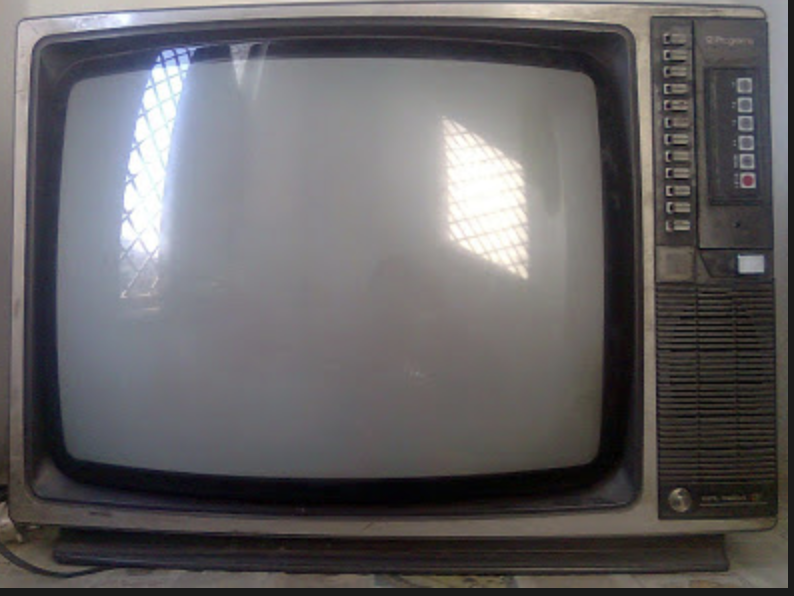Steffi and Me
In the 90s, as a school-age girl, I would watch the French Open and the Wimbledon religiously every year, especially because these championships' schedules coincided with summer holidays in school. Growing up in India, the timezone difference was also convenient for watching the sport live.
Most years, I would throw in some casual productivity by wrapping up all my notebooks and textbooks for the next school year with brown paper. This used to be a thing in schools, probably still is. Why wrap books in brown paper and make them all look alike? Well, that's a whole other discussion.
My father would often talk about tennis as a rich people's sport, so I never pictured myself ever playing tennis. We were not wealthy. But I took a keen interest in the sport as an avid spectator.
My girlhood was spent idolizing Steffi Graf - going so far as to copy her famous pony-tailed hairstyle. Steffi's golden era in tennis coincided with my school years. Graf turned pro the same year I was born, her golden slam year 1988, was the year I started school - as well as my own ponytail saga. Graf retired the year I was starting academically rigorous 11th and 12th grade years.
I barely understood the game when I started watching it as a 6 year old, but that hardly interfered with my curiosity for the player that my father seemed to always root for. Every match Graf snatched away from Navratilova seemed like a personal victory for me. Her quiet grace was another thing I probably noticed and developed a liking for at the time. Steffi seemed shy and quiet, smiled only rarely - making it all the more precious for those of us watching her on TV. As the Seles-Graf years rolled by, I had no doubts about which camp I was on. The grunting, the fist pumping and the overt emotional exuberance of Seles were not very appealing to me.
I distinctly remember watching the 1988 Olympics matches that were re-transmitted in India. Ours was the only house on the street with a color television and that made everything a tad bit more exciting. Color televisions had come to India only a few years before and my parents had bought our first TV, a BPL - Solid IC, 12 channel marvel that had the pride of place in our living room.

(Picture courtesy)
As the years wore on, tennis started to become "different". For reasons I did not grasp at the time, the matches stopped being engaging or "on the edge of your seats" for me. My father himself started to watch fewer and fewer matches and eventually tennis wasn't my family's main sporting spectator event. Cricket took over. 1997 was the year 7 players from Karnataka were part of the Indian cricket team that toured South Africa and West Indies. So between tennis and the excitement of hearing some Kannada phrases on the field, it was an easy choice (Also, hello Rahul Dravid!)
Federer and Me
Cut to several years later - I watched the Federer-Nadal rivalry unfold. Having proclaimed my lifelong loyalty to another German, Boris Becker, I spent little time understanding Federer's game or why the rivalry even mattered. I remained oblivious - until the day I picked up Federer and Me by William Skidelsky.
I love memoirs. Having read Andre Agassi's brilliant memoir Open, I did not think any other sports memoir would ever come close. I was pleasantly surprised by Skidelsky's memoir. The book is, in equal parts, a fan tribute to Federer, an intensely personal story of the author's brush with tennis, the author's fascination with Federer's style of play, an insightful analysis of the game itself and its evolution over time.
This book opened my eyes to why tennis has moved away from serve-volley to power baseline play. It also introduced me to Federer's style of play - what sets him apart and why. Reading about some of the significant Federer games in the book, while watching those matches on Youtube felt like a guided tour into the Federer years.
One section really stood out for me and for this alone the book will remain a keeper on my bookshelf.
Skidelsky offers his take on why Nadal vs. Federer is much more than which player wins. He argues that this is about tennis itself - which player is ethically superior and what qualities are admirable in a player? Effort or skill?
He places Federer on the side of skill/talent - the qualities of effortlessness. Nadal is in the effort camp, with associated qualities of endurance, strength and hard work. The author goes on to talk about why effort has become highly prized in sport - a societal shift from attachment to talent to importance of effort. He talks about the rise of anti-elitism in sport and how people, in their minds, have ended up tying together skill and talent with unearned privilege. (Ref: pages 94 through 99).
Overall, the book was a very engaging read. I found a lot of parallels to my own fascination with tennis and fondly reminisced about my childhood years spent watching the sport. Recommend the book if you're a tennis aficionado!